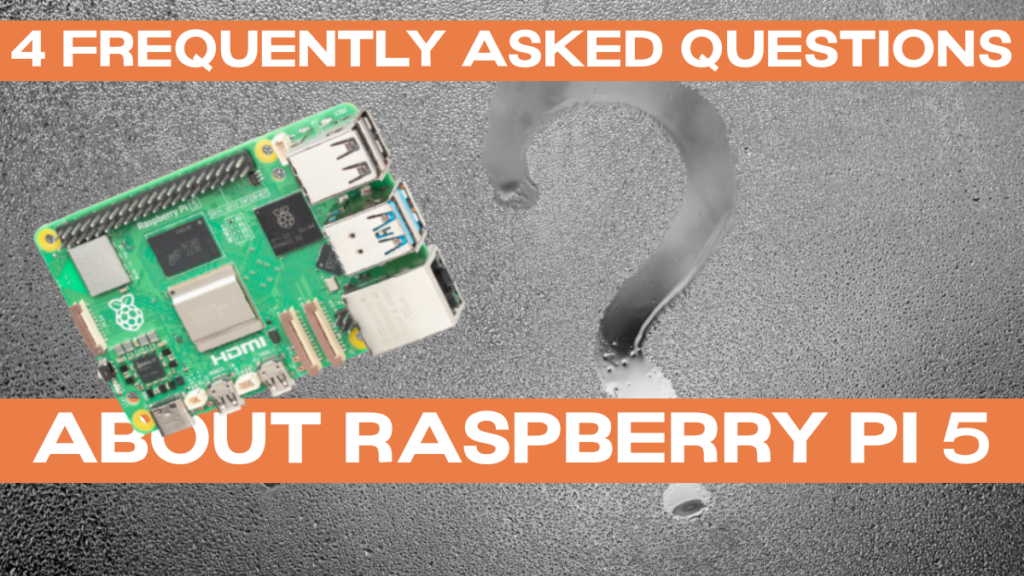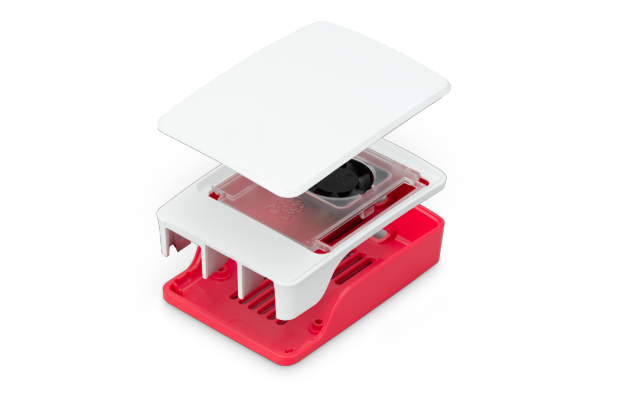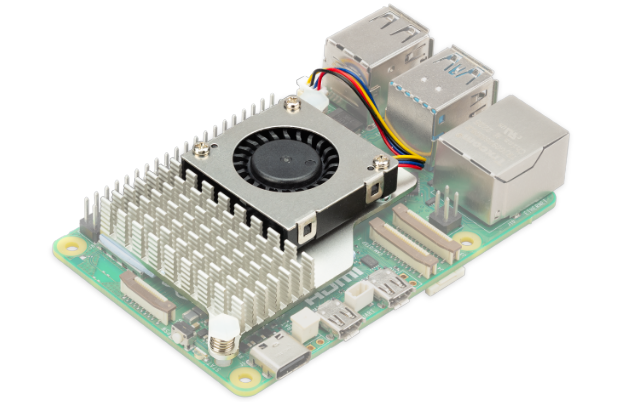4 Frequently Asked Questions about Raspberry Pi 5

Since the announcement of Raspberry Pi 5 last week, I’ve noticed that there are a bunch of questions that come up time and time again. So, I thought it would be valuable to take some time and respond to the 4 most frequently asked questions about Raspberry Pi 5.
Question 1: What’s up with the price?
Answer: There are really three questions bound up with price.
Ok, the first question is what are the prices for the new Raspberry Pi 5 models? Another thing is that the price is always listed in USD, which throws some people off, because Raspberry Pi is based in the UK. And the final question is why is there a gap between the listed price and what you actually find?
First, at launch, there are two options available. Raspberry Pi 5 with 4GB and Raspberry Pi 5 with 8GB. The 4GB variant will be $60 and the 8GB variant will be $80. These are the listed prices.
Second, why do they list the products in dollars anyway? It’s because of the prices of the components. The USD still reigns supreme on the world market and Raspberry Pi prices are dictated primarily by the cost of materials. So while Raspberry Pi Ltd. in the UK has to buy components from other places, the listed prices of Raspberry Pis have to match.
Third, then why can’t I find a Raspberry Pi 5 available exactly at those prices? Mostly because of shipping costs and taxes. $60 or $80 as the listed price does not include the costs of getting the Pi from the factory into your hands.
And if you’re wondering if you’re going to be able to find another $35 Raspberry Pi in the future, just have some patience and keep abreast of when they release 2GB variant. And if they release a 1GB variant in the future, then you’ll definitely find something cheaper!
Now, onto other topics.
Question 2: Does Raspberry Pi 5 need active cooling?
Answer: I’m going to be honest with you – I think the answer to this is “Yes”. There are others who have indicated that you can get by with a good heat sink, but I’ve been playing around with a Raspberry Pi 5 for the past couple of weeks and I can’t imagine relying on passive cooling.

Even with relatively modest uses, I have found my Pi 5 getting pretty hot. And by pretty hot, I mean really hot. The good news is that you can get an Active Cooler (see picture below) or an official case with a built-in fan (see picture above).

Alternatively, I’ve been using a Pimoroni Fan SHIM that goes with Raspberry Pi 4 and it’s been working just fine!
You can read more about my thoughts on Raspberry Pi 5 cooling here.
And stay tuned for our upcoming experiment with liquid nitrogen!
Question 3: Will the Active Cooler fit inside the case?
Answer: Yes, if you remove the top of the case.
Question 4: What’s up with the new power supply?
Answer: To be honest, it’s been surprising to me how many questions there have been regarding the power supply.
So first of all, the new 27W USB-C Power Delivery (PD) Power Supply is a power supply and not a charger. Alasdair Allan mentioned this in the comment section of the introduction post.
Power supplies need to supply constant voltage while the current demands change. Chargers, on the other hand supply constant current.
That’s one of the reasons that the 5V/5A power supply was so tricky to engineer. 5V/5A is low voltage and high current.
Secondly, depending on what you’re planning with the peripherals, your current Raspberry Pi power supply might do just fine. I’ve been running the desktop and some tests with my old Raspberry Pi 4 power supply without any issues.
If you need some clarification, look at this other comment from Alasdair Allan. He clarifies the relationship between the power supply and peripherals:
As I mentioned above, it might be ok running your Raspberry Pi 5 without the new power supply. But I think it’s still worth splurging on the new power supply, honestly.
Part of the reason is PD. Power Delivery enables devices to negotiate and adjust voltage and current levels dynamically.
Therefore, with the new 27W USB-C PD power supply, you’re going to be able to get a really high quality power supply for pretty much all of your devices that take USB-C.
I mentioned this the other day in our post “5 Surprising Features of Raspberry Pi 5“. The new power supply is going to be able to deliver standard PD modes.
That is to say, it can deliver 5V/3A, 9V/3A, 12V/2.25A, and 15V/1.8A.
If you’ve got a laptop, a smartphone, a tablet, or a toaster with USB-C, then you’re probably set.
I’m considering getting a few power supplies just to have around for my family’s devices.
Contest & Newsletter
One last thing before you go!
We know how frustrating it is to have to wait until October 23rd for a Raspberry Pi 5.
So we wanted to make it possible for you to play around with one as soon as possible.
So we’ve set up a contest: What’s the craziest thing you can come up with for Raspberry Pi 5?

Provided your idea doesn’t destroy it, you can send us your idea and we’ll enact it on ours – and write an article about it!
We’ll announce the winner here and on buyzero.de on October 23rd.
The winning idea (determined by us) will win a full Raspberry Pi 5 kit – including with a 27W USB-C Power Delivery (PD) Power Supply, a Raspberry Pi 5 case, an SD card, and a Raspberry Pi 5. All with free shipping within the EU.
The runner-up will win a Raspberry Pi 5 with free shipping within the EU.
So be sure to send in your ideas – you can comment below!
Conclusion
There are four of the most frequently asked questions I’ve come across regarding Raspberry Pi 5.
Have any more questions? Leave a comment below!
